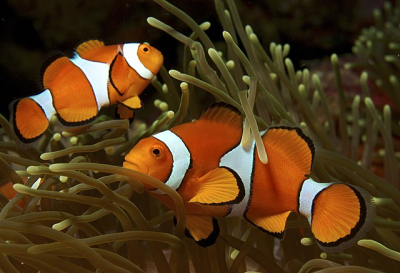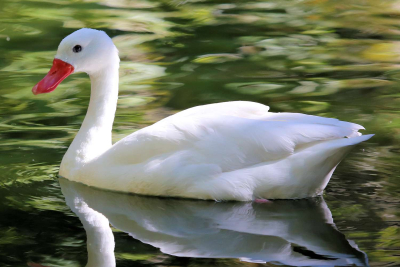What are the species in the wild that change their appearance to escape predators?

There are many species in the wild that change their appearance to escape predators. This is camouflage. But did you know that some species can even change their gender? Let's read up on them.
CLOWNFISH
Clownfishes live in social groups and consist of a dominant female (the largest in size) surrounded by a male and other immature juveniles. Their social hierarchy is based on size and determines the breeding. In a group, the fishes age and grow larger together, without any change in the hierarchy. But this changes when a dominant female dies. When this happens, others will try to use the opportunity to climb up in rank. The male will rapidly change sex to fill in the vacated position. And another fish will turn into a mature male and complete the breeding pair.
HAWKFISH
The hawkfish which is found on coral reefs from Australia to Japan lives in harems (one male with several females). These reef dwellers basically start life as females. Things change when there is a shift in the number of females in the harem. If a male takes on more females into the harem, then, one of the females changes its sex and becomes a male. It then breaks away from the harem and in the process takes half of the harem along with it. It has also been observed by researchers that when a new male gets challenged by another male, it reverses its sex back to a female. This bi-directional sex change is seen in certain reef fishes.
BLACK SEA BASS
Black sea bass is a commercially important species. These are capable of switching their gender from female to male. They are born as females in the wild. They turn into males when they are two to five years old. Research on sea bass reveals that sex change occurs when there is a dip in the male population. If the female sea bass senses a decrease in the male population, they switch their sex.
BANANA SLUG
Banana slugs are wormlike mollusks and they grow up to 10 inches. These animals are hermaphrodites, that is they have both male and female organs. So they don't change their sex back and forth but are unique as they can use both their male and female reproductive organs at the same time. This they do to self-fertilise when necessary. Even when they are capable of self-fertilisation, the majority of banana slugs will take a partner.
GREEN FROG
Researchers have found that frogs spontaneously change sex in the lab and the same has been seen in the wild. In fact, among the green frog population, this sex change is quite common. Earlier research established that sex reversal in frogs may be related to pollution introduced by humans. When exposed to some pollutants (synthetic estrogens and herbicides) in the lab, it has led to genetically male frogs developing outwardly as females. Further studies have proved that this change could be a natural occurrence in amphibians, even in pollution-free settings.
Picture Credit : Google
